by Beth Kassab | Oct 12, 2023 | City Commission, News, Tree Canopy
Who can help preserve Winter Park's tree canopy? You.
Experts will offer tips and answer questions at public forum
Oct. 12, 2023
By Beth Kassab
A who’s who of Winter Park tree advocates will come together on Thursday, Oct. 19 for a panel on how to keep the city’s valued tree canopy healthy.
The forum will run from 6 to 7:30 p.m. at the Winter Park Library and will be hosted by the Winter Park Land Trust’s Tree Committee. The event is free and open to the public.
The panel will include Josh Nye, Winter Park’s parks services manager; Jorden Hinrichsen, the city’s Urban Forestry superintendent; Kim Ashby, Tree Preservation Board Chair; Forrest McCullough, McCullough Arboriculture; and Commissioner Marty Sullivan. Leslie Poole, who leads the Trees Committee for the land trust will be the moderator.
The meeting is noticed as a public meeting and additional commissioners and tree board members are expected to attend.
“Trees do more than enhance the beauty of our city,” read a release from the land trust. “They cool our homes, reducing energy use; help prevent soil erosion; remove air pollutants; filter stormwater run-off; and provide shade on blistering city streets.”
Questions or comments? Email the editor at WinterParkVoiceEditor@gmail.com
To comment or read comments from others, click here →
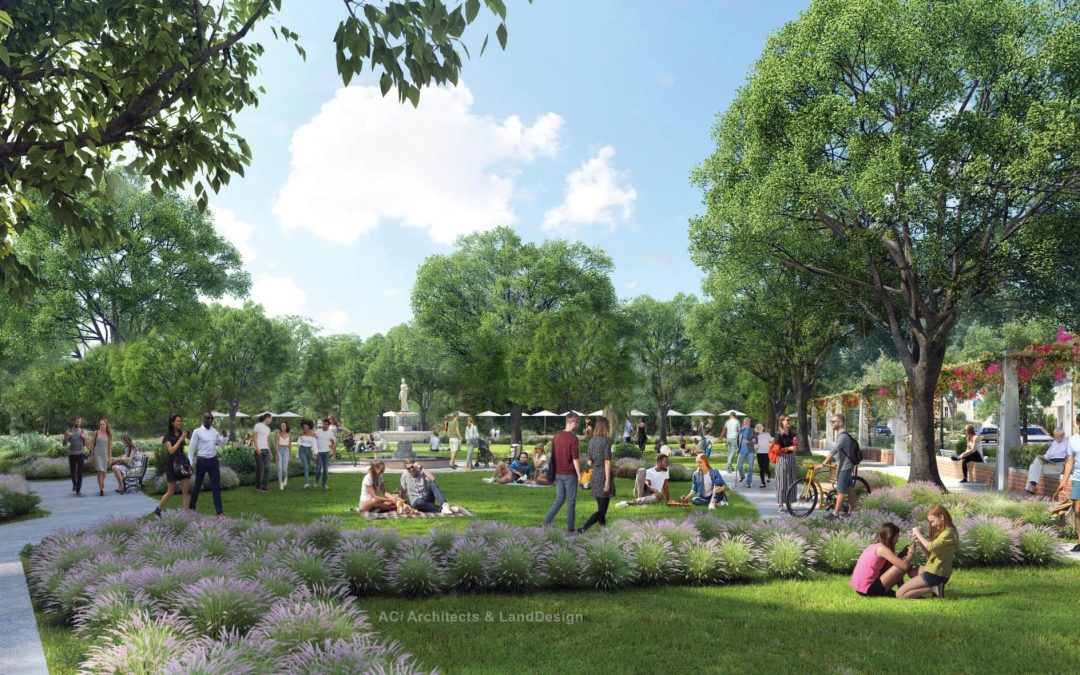
by Beth Kassab | Apr 14, 2023 | City Commission, News, Orange Avenue Overlay, Tree Canopy
Winter Park breaks ground on Seven Oaks Park, will seek performance space proposals
After the ceremony the City Commission held a work session and signaled it will ask developers to submit concepts for a piece of the park
By Beth Kassab
A crowd gathered Thursday morning under a tent to break ground at Seven Oaks Park surrounded by the namesake Live Oaks taking root along the perimeter of the wedge-shaped lot that comes to a point at Orange Avenue and Denning Drive.
“In the future you won’t need the tent, the trees will provide the shade,” said Larry Adams, principal at ACI Architecture, who designed the city’s newest park and has been involved in the concept from the start, creating the first set of blueprints pro bono.
A construction manager is expected to be chosen for the 2.4-acre project soon, Winter Park Mayor Phil Anderson said. Renderings call for the greenspace to become a community gathering spot that also helps link Mead Botanical Gardens with Martin Luther King Jr. Park.
Anderson called the park a “three-year work in progress” after delays brought by the pandemic and hurricanes and noted the mature oaks planted last year at the site formerly known as Progress Point are a “symbolic start to putting something in place that will last for generations.” Anderson said Seven Oaks Park is due to open in mid-2024.
In a nod to the city’s love of its tree canopy, Anderson declared April 13 “Arbor Day” for Winter Park, and the Urban Forestry department gave away trees to residents.
Steve Goldman, chairman of the Winter Park Land Trust, thanked city officials and others who helped shepherd the project along to provide a green refuge from concrete and traffic. “It takes a village,” said Goldman, who is also a founder and financial supporter of the Winter Park Voice.
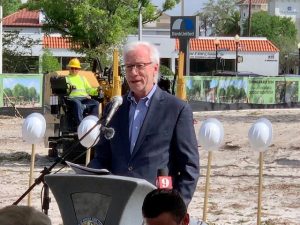
Mayor Phil Anderson gives remarks at the groundbreaking for Seven Oaks Park.
Just hours later Anderson and city commissioners moved beyond symbolism to the nitty gritty of how they want a specific area of the park developed.
For months, Winter Parkers have debated whether the Winter Park Playhouse should move to Seven Oaks Park since its leaders announced the popular theater would lose its lease next year.
Commissioner Todd Weaver proposed a concept that called for the playhouse to be built above the parking lot at the new park along with solar panels.
That idea appeared to gain traction with commissioners, who agreed at the work session that they would soon formally vote on asking for proposals for performance spaces combined with a potential café or other uses in the airspace above the parking lot area.
Heather Alexander, founder and executive director of the playhouse, said she planned to submit a proposal. The building would be paid for by the playhouse and would not require public dollars, she said. But if the theater ever left the park, the building would belong to the city.
To comment or read comments from others, click here →
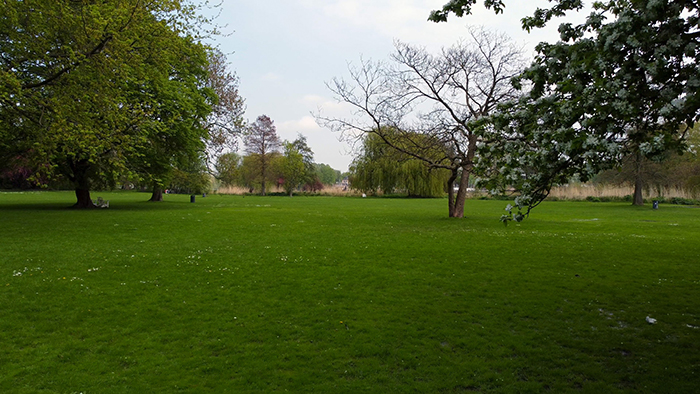
by Anne Mooney | Oct 3, 2021 | Tree Canopy, Zoning and Development
Fresh Air & Sunshine
Passive Green Space is Essential to Livable Communities
Guest Columnist Paul Owens / October 3, 2021
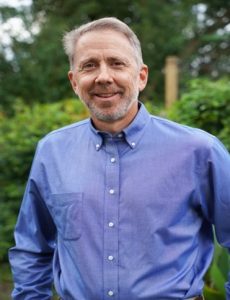 Living in Orwin Manor, a neighborhood that straddles the Orlando-Winter Park line, but leading an organization headquartered in Tallahassee, I regularly make the 250-mile trip by car between my home and the state capital. My favorite place to stop on the way is about halfway in between: a stretch of grass and trees in Fanning Springs on the banks of the Suwannee River. It’s a pocket, passive park, with a small parking area, a restroom and some picnic tables, adjoining a larger state park that has more amenities but also an admission fee.
Living in Orwin Manor, a neighborhood that straddles the Orlando-Winter Park line, but leading an organization headquartered in Tallahassee, I regularly make the 250-mile trip by car between my home and the state capital. My favorite place to stop on the way is about halfway in between: a stretch of grass and trees in Fanning Springs on the banks of the Suwannee River. It’s a pocket, passive park, with a small parking area, a restroom and some picnic tables, adjoining a larger state park that has more amenities but also an admission fee.
I’ve come to look forward to my stops in Fanning Springs as a break to de-stress and enjoy nature. I don’t care about the lack of a concession stand or a souvenir shop. A few minutes of fresh air and sunshine are all I need. Judging from the folks I see at the picnic tables, I’ve got plenty of company.
Since the global COVID-19 pandemic arrived on our shores in the spring of 2020, Americans have flocked to parks as safe places when venturing outside their homes. A survey conducted by the National Recreation and Park Association (NRPA) concluded that 260 million people in the United States — almost 80 percent — visited a local park or recreation facility at least once between May 2020 and May 2021.
Parks — critical to business relocation decisions
Parks are wildly popular. Some 80 percent of U.S. adults look for high-quality parks and recreation in choosing where to live, according to NRPA. Even more, 87 percent, consider parks and recreation an important service provided by their local government. Businesses rank quality parks and recreation among their top three factors in relocation decisions. Communities with growing populations need to add green spaces to maintain or, better yet, improve their quality of life. My organization, 1000 Friends of Florida, believes parks are a critical part of livable communities.
The Trust for Public Land (TPL), in its latest annual report rating park systems across the country, ranked St. Petersburg tops in Florida at No. 14 among 100 U.S. cities. In St. Pete, 75 percent of residents live within a 10-minute walk of a park, and more than one acre in 10 is dedicated to parks and recreation. The city’s 168 parks are a mixture of large parks with an array of recreational facilities and other amenities, and small, passive parks, without buildings or extensive paved areas.
Orlando’s Constitution Green
Five years ago, Orlando went to extraordinary lengths to preserve one of its small, passive parks. The city paid $3.34 million in cash and handed over a half-acre city-owned parcel of property worth another $2.5 million to take possession of Constitution Green, a park of less than two acres occupying a block in downtown Orlando, to save it from possible development. Constitution Green is most revered as the site of a huge, majestic oak tree estimated to be at least 125 years old. The park’s only other amenity is a dog run. Yet the city’s substantial investment met with resounding public approval.
There are numerous documented benefits of parks and green spaces for surrounding communities. They improve public health, both physical and psychological. They provide gathering spaces for families and diverse groups of people, especially when they are accessible free of charge. They beautify communities and increase nearby property values. They reduce flooding.
And notably for a state where rising temperatures are a growing concern, parks reduce temperatures, especially when they are more oriented toward grass and trees than buildings and pavement, according to TPL. They are natural cooling stations. TPL’s analysis of 14,000 cities and towns found that areas within a 10-minute walk of a park are as much as 6 degrees cooler than more distant areas.
While 81 percent of U.S. residents look to parks as a place to exercise, even more, 85 percent, appreciate them as outdoor spaces where they can relax and reflect, according to NRPA. This popularity of the passive element of parks suggests, to be visited and valued, an urban green space doesn’t need services already offered by nearby businesses, or any other bells and whistles. In a sea of rooftops, concrete and pavement, there’s much to be said for a verdant island of serenity.
Paul Owens is president of 1000 Friends of Florida, a nonpartisan, nonprofit organization based in Tallahassee and dedicated to sustainable communities. The opinions expressed in this column are his own.
To comment or read comments from others, click here →
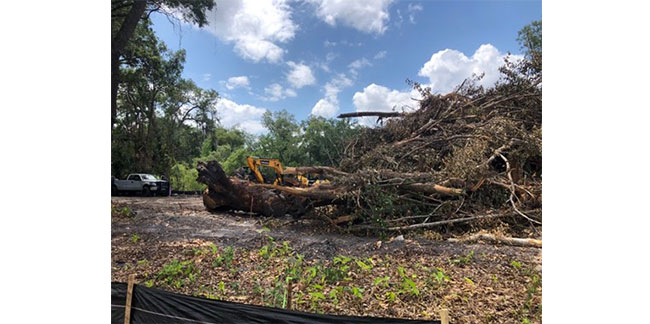
by Anne Mooney | Jun 5, 2021 | Tree Canopy, Zoning and Development
Howell Branch Chain Saw Massacre
by Anne Mooney / June 5, 2021
Once again, 1298 Howell Branch Road is in the news. There is no memory care facility this time, just four lots for single family homes. Sound simple? We’ve been here before.
Developer changes course in 2017
After the Villa Tuscany Memory Care Center failed in 2017 to receive approval, the developer, Villa Tuscany Holdings, LLC, revised its request and received City approval to divide the property into four single-family lots under the current R-3 zoning. The 3.77-acre property, of which only 2.09 acres is buildable because that is the portion above the Ordinary High Water elevation of approximately 66 feet, is located between two bodies of water. The larger to the south is Lake Temple; to the northeast is an unnamed sinkhole.
Four lake-front lots planned
Since all four are lakefront lots, new home construction must be reviewed and approved by the Planning & Zoning (P&Z) Board. The P&Z review focuses on tree preservation, storm water management, making sure plans are compatible with the grade of the lot and maintaining lake views. Each individual plan involves a negotiation with Urban Forestry Department, especially if a specimen tree is involved.
Developer begins work in May 2021
When the developer obtained a permit to begin work on the property in May, a 54-inch oak tree was to be preserved. In addition, a silt fence was erected to prevent clearing along a 50-foot margin from the lakefront to protect neighbors from noise and light pollution from Howell Branch Road.
54-inch oak takes the fall
On May 14, according to Parks and Recreation Director Jason Seeley, who oversees the City’s Urban Forestry Department, a subcontractor arrived with heavy equipment to clear the land. As the clearing began, the crews, unsupervised by the developer, proceeded to take down the silt fence, clear all the way to the lake front and cut down the large specimen oak.
Even after a Stop-Work order and a Code Violation were issued, City staff observed the contractors continuing to clear the land. The City contacted the developer directly, the Stop-Work order is still in place and work on the premises has halted.
Draft tree preservation ordinance planned
A draft Tree Preservation Ordinance has been approved by the Tree Preservation Board and is awaiting review by P&Z in July or August. Changes contemplated include a matrix that uses a range of species, conditions and sizes to generate a mitigation number. Mitigation is strengthened in some areas. For instance, the ordinance proposes separating residential from commercial and increases mitigation requirements for trees on residential property.
Most trees lost to residential development
We lose more trees to residential development than we do to commercial,” said Jason Seeley. “The biggest impact on trees over time is with residential development and building codes. When a small house is torn down to build a McMansion, we lose about 60 percent of available space for plantings on those residential lots. You just can’t plant your way out of that problem.”
Commissioner Sheila DeCiccio pointed out how important it is for alert residents to keep the City informed. “We have a very small Urban Forestry staff,” she said, “and they can’t be everywhere at once. In the case of the Howell Branch property, City staff was responding to neighbors who reported unpermitted activity on the site.”
In an email blast sent June 1, DeCiccio wrote about the proposed tree preservation ordinance. “This revision has several more steps to go through before it reaches a final form to be voted on by the City Commission,” she wrote. “The ultimate aim is to codify an easy-to-understand mitigation / compensation scheme reflective of the value that the citizens of Winter Park place on their trees.
“The tree canopy is an integral part of what makes Winter Park so special. The more we know, the better we can protect this precious resource.”
To comment or read comments from others, click here →
by Anne Mooney | Jan 10, 2020 | Custom Author, Headline, Tree Canopy
Parks Protected in Perpetuity
Citizen Activists Made Sure 122 Acres of Parkland Remains Green
by Anne Mooney / January 10, 2020
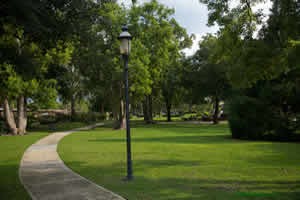 In an economic climate in which developers threaten to gobble up every square inch of open land, a hearty band of Winter Parkers deserves our gratitude for making sure our largest parks are protected from development and will remain forever green.
In an economic climate in which developers threaten to gobble up every square inch of open land, a hearty band of Winter Parkers deserves our gratitude for making sure our largest parks are protected from development and will remain forever green.
Six Winter Park citizens – Michael Poole, Charley Williams, Peter Gottfried, Marty Sullivan, Forest Michael and Kim Allen – have worked tirelessly since May of 2016 to make sure the city government took the necessary steps to preserve five of our largest parks for “outdoor recreation in perpetuity.”
The five parks – Phelps Park, Lake Baldwin Park, Martin Luther King, Jr. Park, the Community Center swimming pool and Temple Trail – had received money from the Florida Recreation Development Assistance Program (FRDAP). This program provides state funds to municipal and county governments to acquire or develop lands for public outdoor recreation.
The FRDAP grant comes with a condition. For each park receiving a grant, a deed restriction for the park must be filed with the Orange County government pledging that the site is dedicated to “outdoor recreation in perpetuity.” Over the years, beginning in 1974 with Lake Baldwin Park (a/k/a Dog Park), money was dispersed and work was done, but the deed restrictions fell through the cracks, leaving open the door to disposal and/or development of some 122 acres of parkland.
When the citizen group learned in 2016 that deed restrictions and site dedications had not been filed for these parks, they brought the matter to the attention of the City and of the Florida Department of Environmental Protection (FDEP).
The happy ending to this story is that, after three and a half years of phone calls, emails, letters and meetings, Kim Allen received notification from the FDEP that the deeds were filed and the parks protected.
The email read: “Good Morning . . . and Happy New Year! I am . . . sending this email to let you know that the City of Winter Park recorded the following Notices of Limitation of Use – Site Dedications, for the projects listed below [i.e., the five parks], with the Orange County Clerk of Courts office. Thank you for your continued patience working with our team and the city to secure these recordings.” The email was signed by Angela Bright, Community Assistance Consultant, Florida Department of Environmental Protection.
Credit goes to Brenda Moody of the Winter Park Public Works Department, who performed the exacting task of making sure the paperwork was properly completed and filed with the county and state agencies.
This kind of behind-the-scenes dedication and dogged determination by citizens who are just like everyone else – with jobs and families and busy lives – is what makes Winter Park such a special place to live. The same tactics that worked for John Muir and Teddy Roosevelt to establish the national park system worked for our very own neighbors. We should be both proud and grateful.
To comment or read comments from others, click here →
by Anne Mooney | Sep 19, 2019 | Headline, Opinion, Tree Canopy, Zoning and Development
The Canopy – Questions Remain
Editor's Note: Articles written by citizens reflect their own opinions and not the views of the Winter Park Voice.
Guest Columnist Marty Sullivan
 The first anniversary of the conditional use approval of the Canopy project is coming up September 24, and shortly thereafter the Commission should receive the construction drawings, from which the City can finally calculate the “not-to-exceed” cost of the project. Despite anticipation of these long-sought answers, questions remain.
The first anniversary of the conditional use approval of the Canopy project is coming up September 24, and shortly thereafter the Commission should receive the construction drawings, from which the City can finally calculate the “not-to-exceed” cost of the project. Despite anticipation of these long-sought answers, questions remain.
The proposed Canopy project is a big deal for our City. Based on the history of our current library, we may have this public building for the next 40 years.
What Questions?
We have to ask: Is the design compatible with our City? Is the library satisfactory in form and function to serve Winter Park citizens? Will the adjoining events center serve Winter Park’s needs for community events? Will the evolving cost fit within our budget? Will long-term maintenance and operation costs be acceptable? Will it be a desirable addition to Martin Luther King, Jr. recreational park?
Let Your City Officials Hear From You
Your City leaders need to hear from you. Let your Commissioners know your thoughts on the proposed library and events center. There is no time to waste. Act now.
You can research the proposed Canopy library and events center on the City web site, https://cityofwinterpark.org/government/city-info/winter-park-canopy/
Narrow Margin Foretold Present Dilemma
In March 2016, we voted on a bond referendum for a new library. I expected a favorable landslide vote, because who isn’t in favor of a new library? The bond passed, despite controversy over vague plans and finalization of the building site. The final breakdown was 51 percent for and 49 percent against. The referendum passed by a margin of just 214 votes, foreshadowing the controversy that was sure to follow.
Initial Concept is Substantially Changed
Are the changes in building sizes from the initial concepts acceptable? The referendum language specified, “For the purpose of building the Winter Park Library and Events Center, to include library facilities, civic meeting and gathering facilities and related parking structure . . . .”
Voters were told there would be a 50,000-square-foot (sf) library, an 8,505 sf civic center and a 200-space parking garage (“Community Engagement Workshops,” ACi Architects, 10/26/2015).
Now, the plans are for a 34,400 sf library and a 13,564 sf events center. The ‘associated parking structure’ has been replaced by surface parking (City Commission conditional use approval, 9/24/2018). The Canopy library is only 400 sf larger than the current library facility. Library staff cites efficient use of space, which compensates for the reduction in size, but is this library adequate for our citizens’ needs?
MLK Park Loses Trees and Green Space
Are changes to the Martin Luther King, Jr. Park appropriate? The proposed structure will reduce the MLK park area by an estimated two acres, and the storm water treatment area must be expanded, although no specifications had been developed as of May 2019 (LandDesign engineers).
What Effect Will Tourism Dollars Have?
The City secured a $6 Million Tourist Development Tax (TDT) grant in return for making the Canopy Events Center available for international tourism. At the City’s presentation to the TDT grant board, City Manager Randy Knight was asked about the extent of Winter Park citizens’ use of the event center facility. He responded that he thought Winter Park residents might use the facility during the week, but that the event center would be available on weekends for tourism activities. Winter Park voters approved the bond referendum based on an event center with the purpose of “civic meeting and gathering facilities.” However, now the intended purpose seems to be an international tourism destination. (Presentation before Tourist Tax Grant Board 3/15/2019).
No Hard Numbers, So Far
Cost estimates have been a moving target. To date, the City has provided only artistic renderings, and we are depending on bids based on construction drawings to derive hard costs. The City’s official position on cost estimate is $40.5 million, coming from $28.7 Million in bonds, $6 Million TDT grant and $5.4 Million in private donations. The estimated total budget with contingencies is $43 Million.
How many private dollars should our community contribute to this one project? Are we draining resources away from other endeavors? We have other important projects on the horizon, many of which may require private sector support, such as plans for the post office site, new parks, city hall renovations and repurposing the old library site.
How high is too high?
What final figure will cause our City leaders to pause and rethink this project? Fifty Million? We’ve heard $55 Million. Commissioners need to tell us now what they consider an acceptable figure to move ahead with the Canopy.
To comment or read comments from others, click here →
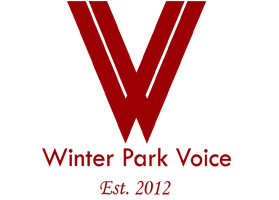







Recent Comments